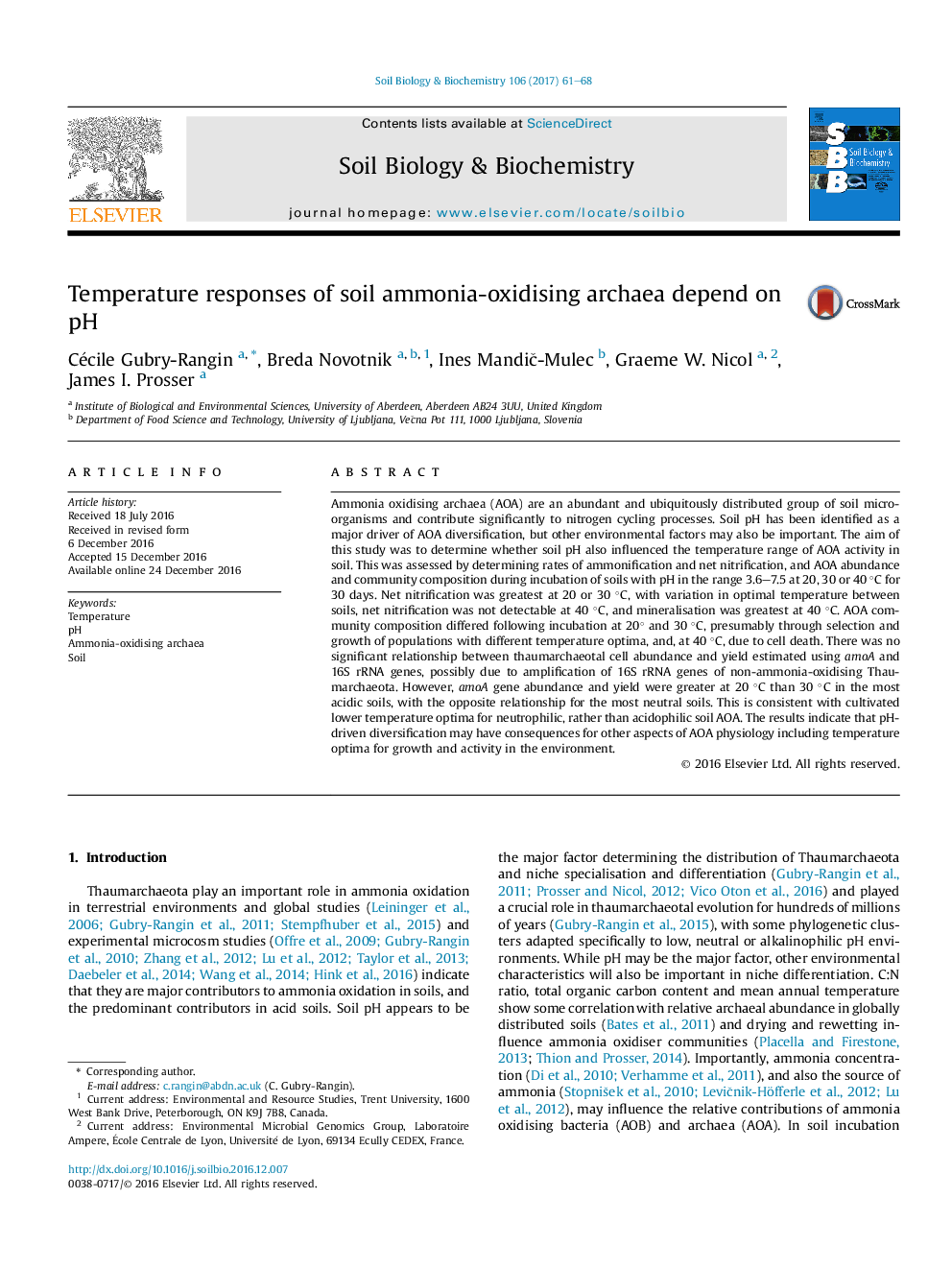| کد مقاله | کد نشریه | سال انتشار | مقاله انگلیسی | نسخه تمام متن |
|---|---|---|---|---|
| 5516570 | 1542578 | 2017 | 8 صفحه PDF | دانلود رایگان |

- Net nitrification in mesophilic soils depends on temperature.
- Both archaeal ammonia oxidiser abundance and yield are correlated with soil pH.
- Thaumarchaeotal pH-driven diversification may influence other physiological aspects.
Ammonia oxidising archaea (AOA) are an abundant and ubiquitously distributed group of soil microorganisms and contribute significantly to nitrogen cycling processes. Soil pH has been identified as a major driver of AOA diversification, but other environmental factors may also be important. The aim of this study was to determine whether soil pH also influenced the temperature range of AOA activity in soil. This was assessed by determining rates of ammonification and net nitrification, and AOA abundance and community composition during incubation of soils with pH in the range 3.6-7.5 at 20, 30 or 40 °C for 30 days. Net nitrification was greatest at 20 or 30 °C, with variation in optimal temperature between soils, net nitrification was not detectable at 40 °C, and mineralisation was greatest at 40 °C. AOA community composition differed following incubation at 20° and 30 °C, presumably through selection and growth of populations with different temperature optima, and, at 40 °C, due to cell death. There was no significant relationship between thaumarchaeotal cell abundance and yield estimated using amoA and 16S rRNA genes, possibly due to amplification of 16S rRNA genes of non-ammonia-oxidising Thaumarchaeota. However, amoA gene abundance and yield were greater at 20 °C than 30 °C in the most acidic soils, with the opposite relationship for the most neutral soils. This is consistent with cultivated lower temperature optima for neutrophilic, rather than acidophilic soil AOA. The results indicate that pH-driven diversification may have consequences for other aspects of AOA physiology including temperature optima for growth and activity in the environment.
Journal: Soil Biology and Biochemistry - Volume 106, March 2017, Pages 61-68